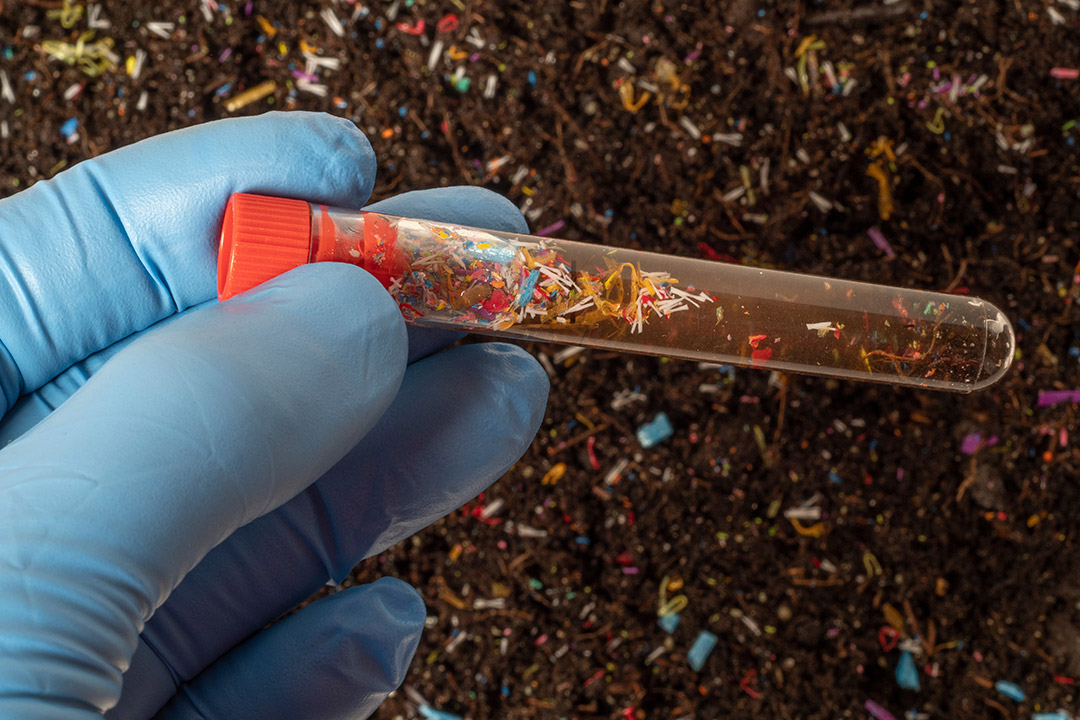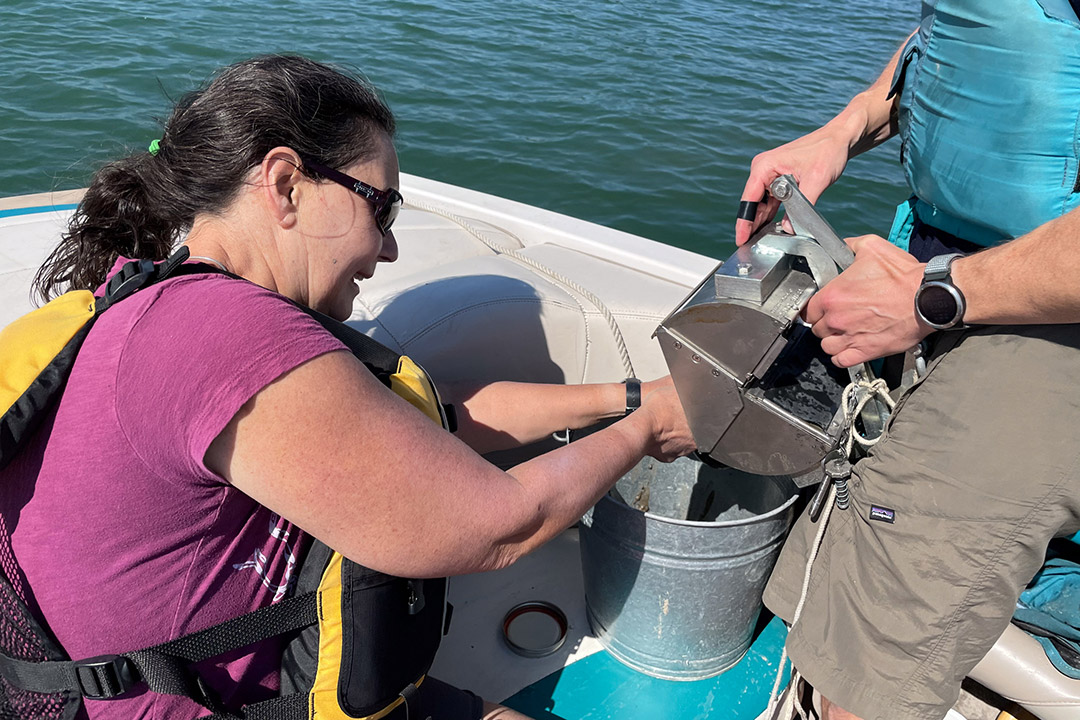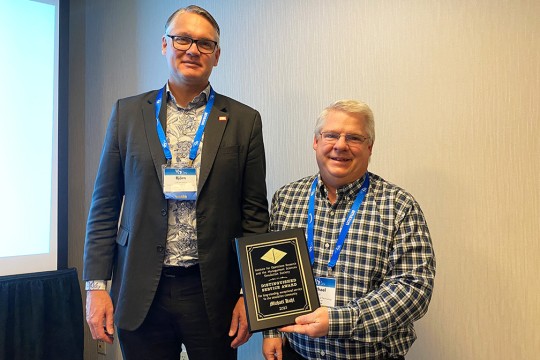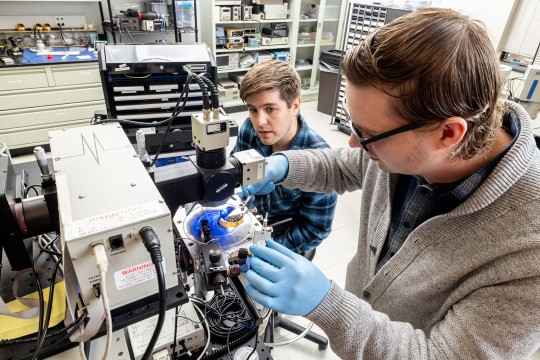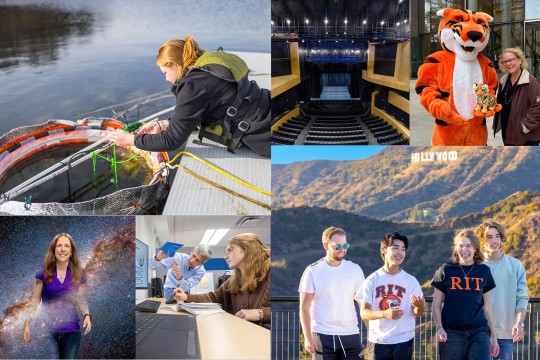New microplastics research hub aims to unravel health impact in changing climate
RIT professor Christy Tyler is a co-director of the center supported by a $7.3 million grant
Vera Kuttelvaserova/stock.adobe.com
The Lake Ontario Center for Microplastics and Human Health in a Changing Environment will study the lifecycle of microplastics through the Great Lakes freshwater ecosystem. RIT professor Christy Tyler is co-director of the new research center supported by a $7.3 million grant.
A new Rochester-based research center will study the lifecycle of microplastics, including its origin as plastic waste, distribution, and movement in the Great Lakes freshwater ecosystem. The research will also focus on how climate change could intensify the environmental and health threats posed by microplastics.
The Lake Ontario Center for Microplastics and Human Health in a Changing Environment is a collaboration between Rochester Institute of Technology and the University of Rochester, and supported by a $7.3 million grant from the National Institute of Environmental Health Sciences (NIEHS) and the National Science Foundation (NSF) under the federal Oceans and Human Health program.
“This funding gives us the opportunity to bring together environmental and health sciences researchers to tackle a truly global crisis”, said Christy Tyler, professor in the Thomas H. Gosnell School of Life Sciences at RIT and co-director of the center with Katrina Korfmacher, a professor of Environmental Medicine at the University of Rochester Medical Center (URMC). “We plan to combine research on the quantity and characteristics of plastic in the places where people are most likely to encounter it, with research on how these particles impact our health. And as a result, we’ll be able to come up with a more holistic understanding of the potential harm of plastic pollution, and how we can develop targeted strategies to minimize it.”
Microplastics, particles less than 5 mm in size, are produced from plastic waste, which over time is broken down into microscopic fragments that move easily through the food chain. Common sources of plastic pollution include food wrappers, plastic bottles, plastic bottle caps, plastic bags, plastic straws, cigarette butts, tire-wear particles, and synthetic clothing. Plastic waste enters the environment via urban stormwater and agricultural runoff, and wastewater. Microplastics are ubiquitous, frequently difficult to detect and mitigate, and research has found the particles in human blood, heart, liver, and lung tissue, placenta, and breast milk. However, little is known about their long-term impact on human health.
Provided
Christy Tyler conducts research on microplastics in Lake Ontario. She is a co-director of the newly announced Lake Ontario Center for Microplastics and Human Health in a Changing Environment.
The Great Lakes hold more than 20 percent of global surface freshwater and are a source of drinking water, irrigation, fisheries, and recreation for more than 30 million people. While progress has been made in recent decades to improve the environmental health of the lakes, these gains are threatened by rising plastic pollution.
The new center will undertake research projects that aim to understand how environmental changes may affect the movement and characteristics of microplastics in Lake Ontario, how microplastics interact with other contaminants, and the impact on inflammation and immune response in model biological systems. The goal is to develop and promote solutions that inform future research, community actions, and policy changes that will lessen the health effects associated with microplastics.
One project builds on several years of collaborative work at RIT to understanding the input, transport, and ecological risk of plastic pollution in the Lake Ontario basin. The interdisciplinary team, which will be led by Tyler, and includes Matthew Hoffman, professor in the School of Mathematics and Statistics; Nathan Eddingsaas, associate professor in the School of Chemistry and Materials Science; Steven Day, professor and head of the Department of Biomedical Engineering; and André Hudson, professor and dean, College of Science. They will examine how climate-related factors, namely warmer weather and more severe storms, will increase the delivery of post-consumer plastic to Lake Ontario.
Tyler, Hoffman, and a group of other RIT scientists have been working with National Oceanic and Atmospheric Administration funding to lead interdisciplinary projects examining plastic waste entering the Great Lakes, and how to prevent and remove it. RIT’s collaborations with the Rochester Museum and Science Center, Seneca Park Zoo, Monroe County, the city of Rochester, and other local institutions continue to provide a joint effort in combating environmental concerns.
A project by the University of Rochester will employ nanomembrane technologies to identify ultrafine microplastics in the water and air that can be more easily ingested into blood and tissue. Another will use frogs as models to study how waterborne microplastics enter, move about, and accumulate in the body at different water temperatures anticipated due to global warming. All research projects will be supported by a materials core led by University of Rochester with participation by Iris Rivero, a professor of industrial and systems engineering at RIT. The center will also engage with community partners through involving residents in efforts to monitor debris flows, and developing, evaluating, and disseminating outreach materials for audiences including youth, educators, community groups, and policy makers in both urban and rural settings.
“This partnership between universities shows how local researchers can work together to address questions of global significance,” said Ryne Raffaelle, vice president for Research at RIT. “How microplastics, combined with climate change, impact the ways in which we live and overall human health is something we need to investigate. This new center will be key to understanding, and hopefully mitigating, the convolution of these environmental impacts and their potential deleterious effects.”
Funding for the center was provided by NIEHS award number P01 ES035526 and NSF award number OCE-2418255.



